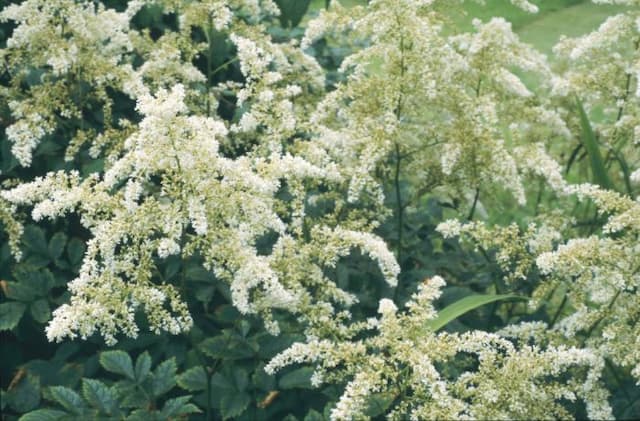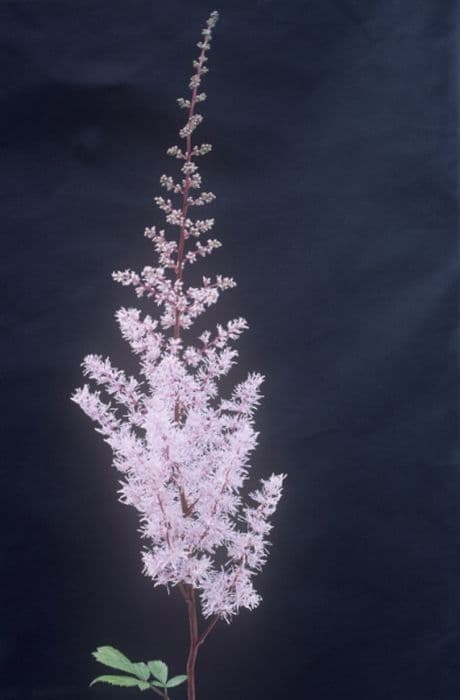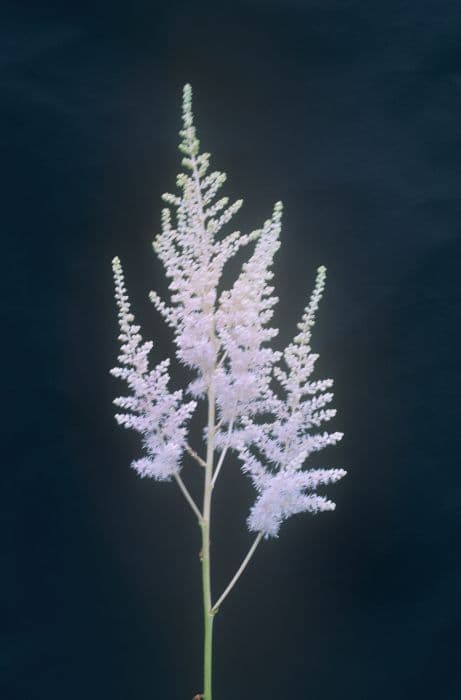Coral Bells Heuchera Key Lime Pie = 'Tnheu042' (PBR) (Dolce Series)
![alum root [Key Lime Pie]](/_next/image?url=https%3A%2F%2Fplants-admin.emdemapps.com%2Fimages%2Fplants%2F%2Fimages%2F607ea70100cff.jpg&w=3840&q=75)
ABOUT
Heuchera Key Lime Pie, part of the Dolce Series, is a vibrant and eye-catching perennial known for its unique foliage. The leaves of this plant are a standout feature, being ruffled and large with a color that resembles the tart and sweet dessert its name suggests. Imagine a medley of green hues, predominantly a bright, lime green that can add a zesty pop of color to any garden setting. The foliage often displays a gentle silver overlay, which adds a shimmering effect to the textured leaves, almost as if they have been dusted with powdered sugar. The leaves are rounded, and their edges are adorned with delicately scalloped margins, which further contribute to their visual appeal. During the blooming period, Heuchera Key Lime Pie produces delicate bell-shaped flowers. These flowers emerge on thin stems that gracefully stand above the foliage. They are typically a soft, creamy color, complementing the striking foliage without overshadowing it. The combination of bright foliage and subtle flowers creates a harmonious visual contrast that can be quite striking in a garden design. Overall, the plant exudes a lush and full appearance, serving as both a spectacular ground cover and an accent plant due to its colorful and textured leaves. Heuchera Key Lime Pie's aesthetic makes it highly coveted for ornamental use in shaded to partially shaded garden areas, containers, borders, and as an underplanting for taller, less colorful species. It thrives best in temperate climates and adds a long-lasting splash of color with its evergreen qualities in milder winter regions.
About this plant
 Names
NamesFamily
Saxifragaceae
Synonyms
Key Lime Pie Coral Bells, Dolce Key Lime Pie
Common names
Heuchera 'Tnheu042'
 Toxicity
ToxicityTo humans
Coral Bells, the common name for Heuchera Key Lime Pie, is not known to be toxic to humans. There are no significant reports of this plant causing poisoning when touched or ingested. However, as with any plant, individuals with particular sensitivities may experience mild irritation of the skin or stomach if they handle or ingest parts of the plant.
To pets
Coral Bells, also known as Heuchera Key Lime Pie, is generally considered non-toxic to pets, including dogs and cats. This means that the plant is not expected to cause significant illness or symptoms in pets if they ingest parts of it. Nevertheless, individual pets may have a sensitivity or allergic reaction to the plant, which can occasionally cause mild gastrointestinal upset, such as vomiting or diarrhea.
 Characteristics
CharacteristicsLife cycle
Perennials
Foliage type
Semi-deciduous
Color of leaves
Lime green
Flower color
White
Height
1 foot 10 inches (25-30 cm)
Spread
1 foot 2 inches (30-35 cm)
Plant type
Herb
Hardiness zones
4-9
Native area
North America
Benefits
 General Benefits
General Benefits- Ornamental Appeal: The Heuchera Key Lime Pie has vibrant lime-green foliage that adds a splash of color and visual interest to gardens and landscapes.
- Seasonal Interest: This plant offers year-round interest thanks to its evergreen leaves, which look attractive in all seasons.
- Drought Tolerance: Once established, it is relatively drought-tolerant, making it suitable for xeriscaping and low-water gardens.
- Easy Care: It requires minimal maintenance, making it a good choice for both novice and experienced gardeners.
- Versatility: Suitable for container gardening as well as in-ground planting, providing flexibility in garden design and space utilization.
- Texture Contrast: The Heuchera Key Lime Pie's unique, ruffled leaves provide texture contrast when planted alongside other garden plants.
- Shade Tolerance: This plant thrives in partial shade, making it ideal for underplanting beneath trees or in other shady spots where many plants struggle.
- Attracts Wildlife: Its flowers attract pollinators such as butterflies and bees, supporting local ecosystems.
- Non-Invasive: It forms clumps and does not spread aggressively, reducing the risk of it overtaking other plants in the garden.
- Disease and Pest Resistance: It is relatively resistant to common garden pests and diseases, reducing the need for chemical treatments.
 Medical Properties
Medical PropertiesThis plant is not used for medical purposes.
 Air-purifying Qualities
Air-purifying QualitiesThis plant is not specifically known for air purifying qualities.
 Other Uses
Other Uses- Container Gardening: Heuchera 'Key Lime Pie' can add a pop of color to mixed container plantings, providing both foliage interest and a contrast with flowering plants.
- Edging Paths: The compact size of Heuchera 'Key Lime Pie' makes it ideal for lining pathways, where its lime green foliage can highlight the edge and lead the eye through the garden.
- Fairy Gardens: Due to its small size and decorative leaves, this plant is perfect for creating whimsical fairy gardens that both adults and children can enjoy.
- Crafting: The unique foliage can be used in floral arrangements or craft projects, adding a unique texture and color to wreaths, garlands, or other decorative items.
- Photo Backdrops: Garden photographers may use Heuchera 'Key Lime Pie' as a fresh, bright background for close-up photos of insects, other plants, or garden ornaments.
- Seasonal Decor: Leaves of the Heuchera 'Key Lime Pie' can be incorporated into fall or spring tablescapes, providing a natural element to the decor.
- Culinary Garnish: While not common, the foliage could potentially be used as a non-toxic garnish for certain dishes, lending a decorative touch to plating.
- Aquascaping: Although not an aquatic plant, the foliage could be used in the design of paludariums (part terrestrial and part aquatic habitats) to add color and interest.
- Host Plant: The plant can serve as a host for larvae of certain butterfly species, creating a butterfly-friendly zone in the garden.
- Teaching Tool: In educational settings, Heuchera 'Key Lime Pie' can be used to teach about plant care, propagation, and the role of foliage plants in garden design.
Interesting Facts
 Feng Shui
Feng ShuiThe Coral Bells is not used in Feng Shui practice.
 Zodiac Sign Compitability
Zodiac Sign CompitabilityThe Coral Bells is not used in astrology practice.
 Plant Symbolism
Plant Symbolism- Vitality: The vibrant lime-green foliage of the Coral Bells can symbolize energy and life, much like the zest and freshness associated with the color of key lime pie.
- Endurance: Coral Bells are known for their hardiness and ability to survive in various climates, representing resilience and the capacity to endure challenges.
- Change and Transformation: The plant goes through a series of transformations throughout the seasons, which can symbolize the natural progression of life and personal growth.
- Joy and Cheerfulness: The bright and cheerful appearance of the Coral Bells can embody a sense of joy and positivity in the garden space it inhabits.
 Water
WaterCoral Bells should be watered regularly to maintain moist but well-drained soil, especially during dry spells. Allow the top inch of soil to dry out between waterings to prevent waterlogging, which can lead to root rot. In general, watering once a week with about one to one and a half gallons of water should be sufficient, but this may need to be adjusted based on temperature and humidity levels. During periods of extreme heat, you may need to water more frequently, while in cooler weather, you can water less often. It's important to avoid overhead watering to prevent leaf diseases; instead, water at the base of the plant.
 Light
LightCoral Bells thrive best in partial shade, especially in the afternoon when the sun is the strongest. An ideal spot would be under a tree canopy or on the east side of a building where it can receive morning sunlight and avoid the intense heat of the afternoon. These plants can tolerate morning sun but should be shielded from harsh afternoon rays to prevent leaf scorch.
 Temperature
TemperatureCoral Bells prefer moderate temperatures and can typically survive in a range between 30°F and 80°F. They are hardy and can withstand some frost, making them suitable for many climates, but they should be protected from extreme cold and heat. The ideal temperature range for these plants would be between 50°F and 70°F to promote optimum growth and foliage color.
 Pruning
PruningPruning Coral Bells is done to remove any dead or damaged foliage and to encourage a tidy growth habit. It is best to prune them in early spring before new growth starts or immediately after flowering. Cut back any spent flower stalks and remove old, tattered leaves to keep the plant looking its best. Annual pruning, sometimes referred to as "deadheading" when it involves removing old flower stalks, can help promote vigorous growth and improve air circulation.
 Cleaning
CleaningAs needed
 Soil
SoilFor Heuchera, commonly known as Coral Bells, the best soil mix is well-draining, rich in organic matter, and sandy loam. They prefer a slightly acidic to neutral soil pH, ranging from 6.0 to 7.0. Amend heavy soils with compost or peat moss to improve drainage and aeration.
 Repotting
RepottingCoral Bells (Heuchera) usually do not need to be repotted frequently. They should be repotted every 3-4 years or when they outgrow their current container. This will provide fresh nutrients and room for growth.
 Humidity & Misting
Humidity & MistingCoral Bells thrive in average household humidity levels but can tolerate a range. They prefer humidity levels between 40% and 70%, which suits most indoor environments. Avoid extremely low humidity that might dry out the leaves.
 Suitable locations
Suitable locationsIndoor
Place Coral Bells in bright, indirect light inside.
Outdoor
Grow Coral Bells in morning sun, dappled shade.
Hardiness zone
4-9 USDA
 Life cycle
Life cycleHeuchera Key Lime Pie, also known as Coral Bells, begins its life cycle when seeds are sown or when it is propagated vegetatively via tissue culture or division. The seeds germinate to form rosettes of foliage that mature and develop their characteristic lime-green leaves. As the plant enters the vegetative stage, it produces more leaves and gains size, typically in the spring and early summer. In late spring to summer, it progresses to the flowering stage, sending up tall, slender stems with small bell-shaped flowers that attract pollinators. After blooming, seeds are produced and dispersed, or the plant may be deadheaded to encourage additional growth and a tidier appearance. Coral Bells completes its cycle by entering a period of dormancy in the winter, where growth slows down, and the plant conserves energy to survive colder temperatures until the cycle restarts in the spring.
 Propogation
PropogationPropogation time
Spring to Summer
Propogation: The Heuchera Key Lime Pie, commonly referred to as Coral Bells, is often propagated by division, which is the most popular method for this perennial plant. The best time to divide Coral Bells is in the spring or early fall when the plant is not in full bloom to minimize stress. To divide, the gardener should carefully dig around the plant, lift it from the soil, and gently separate it into smaller clumps, making sure each section has a portion of the roots and foliage. These divisions can then be replanted immediately at the same soil depth they were previously growing. Care should be taken to water the new divisions thoroughly to help establish them in their new locations. This method is effective because it helps maintain the varietal characteristics of the parent plant and can rejuvenate older clumps that may have become woody or less vigorous in the center.









